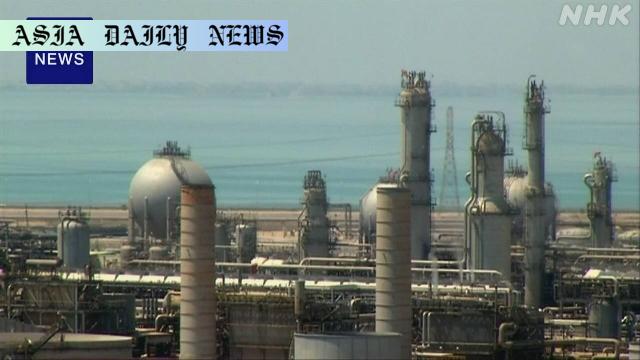OPEC+: Major oil group to boost production by 411,000 barrels in June, despite falling demand and lower crude oil prices.

OPEC+ to Ramp Up Oil Production in June
OPEC+, a coalition of oil-producing nations including OPEC members like Saudi Arabia and non-members such as Russia, recently announced its decision to significantly increase crude oil production in June. In a virtual meeting held over the weekend, representatives from eight countries agreed to raise production by an additional 411,000 barrels per day. This move follows an already larger-than-expected production hike in the month of May, signaling the group’s strategic approach to adapt to current economic and market challenges.
The decision comes in the context of falling crude oil prices, which have been declining due to global economic uncertainties. One of the contributing factors is the ongoing trade war between the world’s two largest economies, the United States and China. Analysts argue that the decision to boost supply, despite tepid demand, could potentially exacerbate the downward pressure on crude oil prices.
Crude Oil Price Trends Reflect Economic Concerns
In April, the West Texas Intermediate (WTI) benchmark index recorded its lowest levels in over four years, with prices dipping to the $55 range per barrel and briefly hitting the $56 range this May. Such price dynamics reveal growing anxieties about global economic growth and demand for crude oil. The decision by OPEC+ to continue raising output has created a divisive reaction among market observers. While some view it as a necessary step to prevent market stagnation, others worry it may lead to an oversupply situation, further dragging prices down.
Notably, OPEC+ has been reducing its output since April to stabilize the markets. Yet, this recent acceleration in production levels seems to mark a departure from the more cautious strategies previously adopted by the group. Whether this decision is driven by geopolitical motives or long-term market control strategies remains a topic of exploration for energy analysts and observers alike.
Potential Impacts of the Output Hike
The implications of OPEC+’s production hike are manifold. On one hand, higher output could lead to increased oil revenues for member countries, particularly for nations like Saudi Arabia and Russia, which rely heavily on oil exports for their economic stability. However, the global energy market is a delicate ecosystem. An oversupply of crude oil could intensify competitive pressures, further destabilizing markets already grappling with demand fluctuations and geopolitical tensions.
Analysts also point out that the US-China trade war has introduced significant volatility into the global economy, with ripple effects impacting oil demand across major importing markets. Given these uncertainties, OPEC+ faces a formidable challenge in balancing production increases with the preservation of reasonable price stability to avoid long-term adverse impacts on economies reliant on energy exports.
Commentary
The Risks and Rewards of OPEC+’s Decision
OPEC+’s decision to hike oil output by 411,000 barrels per day is undoubtedly bold, but it raises questions about the timing and potential ramifications of such a move. Amid falling crude oil prices and global economic concerns, this strategy appears to be a calculated gamble. On the one hand, it showcases the group’s commitment to exert influence in global energy markets. On the other hand, it risks exacerbating an already fragile situation by potentially creating a glut in supply.
While the group has made significant strides in navigating the complexities of the global oil market, recent moves highlight the internal and external tensions that OPEC+ must manage. Member countries like Saudi Arabia and Russia have vast but divergent economic needs, and balancing national interests with group cohesion is no small feat. Add to this the increasing competition from renewable energy sources and alternative fuels, and it’s clear that OPEC+ faces an uphill battle to maintain its dominance.
The Broader Economic Context
It’s important to recognize that the production increase is occurring against a backdrop of significant economic challenges. The ongoing trade war between the United States and China is one of the key factors driving demand uncertainty. Both countries account for substantial portions of global economic output and energy consumption, meaning any slowdown in their economies has far-reaching effects. As such, OPEC+ must tread carefully to avoid exacerbating market volatility.
There’s also the issue of consumer sentiment, which is often closely tied to energy prices. Persistent drops in crude oil prices can signal economic strain and contribute to reduced spending, creating a feedback loop of weakened demand. For OPEC+, finding the optimal balance between supply and price stability is more critical than ever.
Final Thoughts on Market Implications
Ultimately, OPEC+’s decision to increase output in June will be closely monitored by analysts and stakeholders worldwide. The move has significant implications, not only for energy prices but also for geopolitical dynamics and the broader global economy. Moving forward, the challenge for OPEC+ will be to navigate these complexities with a focus on both short-term gains and long-term sustainability. Given the rapid pace of change in the energy sector, striking this balance will be anything but easy.


